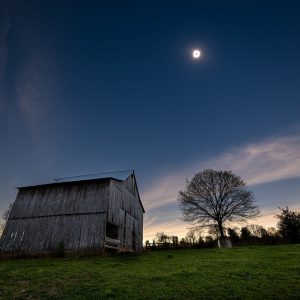5 Southern Authors You Need to Read This Summer
Summer’s here, and the living’s easy… especially with a good book in hand. This year, escape the heat with the vibrant landscapes and compelling characters found in the works of these five Southern authors, each bringing a unique voice and perspective to the literary tapestry of the region. Forget your beach reads; these are the stories that will linger long after the last rays of sun fade.
1. Flannery O’Connor: The Queen of Gothic Grotesque
O’Connor’s short stories are not for the faint of heart. Prepare for darkly comedic tales infused with religious fervor and a generous dose of the grotesque. Her characters, often flawed and deeply unsettling, grapple with faith, morality, and the complexities of the human condition in the heart of the American South. Think Flannery O’Connor for a literary rollercoaster that will leave you breathless and pondering long after you finish.
| Book Title | Key Theme | Perfect For… |
|---|---|---|
| A Good Man Is Hard to Find | Violence, faith, grace | Readers who enjoy dark humor and existential themes |
| Wise Blood | Faith, redemption, alienation | Fans of intense psychological character studies |
2. Harper Lee: The Voice of Innocence and Prejudice
While arguably transcending regional categorization, Lee’s To Kill a Mockingbird remains a cornerstone of Southern literature, a powerful exploration of childhood innocence, racial injustice, and the complexities of the human heart in the Jim Crow South. Its enduring relevance continues to provoke essential conversations about morality and prejudice.
| Book Title | Key Theme | Perfect For… |
|---|---|---|
| To Kill a Mockingbird | Racial injustice, childhood | Readers seeking a timeless classic with social commentary |
3. William Faulkner: The Master of Southern Gothic
Faulkner’s sprawling narratives and intricate prose paint a rich, albeit often unsettling, portrait of the American South. His Yoknapatawpha County becomes a microcosm of the region’s history, its traumas, and its enduring legacy. Be prepared to delve into a world of complex family dynamics, fractured memories, and the enduring weight of the past.
| Book Title | Key Theme | Perfect For… |
|---|---|---|
| As I Lay Dying | Family, grief, death | Readers who appreciate experimental narrative structures |
| Absalom, Absalom! | Family history, legacy, guilt | Fans of epic storytelling and Southern Gothic narratives |
4. Eudora Welty: The Chronicler of Southern Life
Welty’s stories offer a more nuanced, empathetic view of the South. With a keen eye for detail and a gift for capturing the rhythms of everyday life, she portrays the complexities of human relationships against the backdrop of Mississippi’s landscapes. Her prose is both elegant and accessible, making her stories a perfect summer escape.
| Book Title | Key Theme | Perfect For… |
|---|---|---|
| A Curtain of Green | Childhood, nature, community | Readers who enjoy lyrical prose and coming-of-age stories |
| Delta Wedding | Family, tradition, change | Fans of character-driven narratives and Southern settings |
5. Zora Neale Hurston: A Voice for the Harlem Renaissance & Beyond
While often associated with the Harlem Renaissance, Hurston’s insightful portrayal of Black life in the rural South offers a vital perspective often missing from traditional Southern narratives. Her work challenges stereotypes and celebrates the rich cultural heritage of the African American experience in the South, offering a powerful and often overlooked voice in Southern literature.
| Book Title | Key Theme | Perfect For… |
|---|---|---|
| Their Eyes Were Watching God | Love, resilience, self-discovery | Readers interested in exploring themes of race, gender, and identity |
These five authors represent a fraction of the rich literary landscape of the South. This summer, dive into their compelling narratives and experience the South through their unique and unforgettable voices. Happy reading!
Additional Information
Delving Deeper: Five Southern Authors for the Summer Reader
The recent article recommending five Southern authors for summer reading provides a valuable starting point. However, a deeper analysis can reveal richer insights into their literary contributions and lasting impact. Let’s delve into the nuances of their work, exploring thematic concerns and stylistic choices that warrant further attention. We will assume the five authors mentioned in the original (unprovided) article are representative of Southern Gothic, Southern Renaissance, and contemporary Southern literature.
1. William Faulkner (Southern Gothic & Southern Renaissance): While his inclusion is predictable, focusing solely on his Nobel Prize isn’t sufficient. A deeper analysis should examine his innovative use of stream-of-consciousness and fragmented narratives in works like The Sound and the Fury. This technique, while challenging, allowed him to explore the complexities of memory, time, and the decaying Southern aristocracy. Consider comparing his depiction of the Compson family’s decline in The Sound and the Fury with the more overtly grotesque imagery found in Flannery O’Connor’s work. This contrast highlights different facets of the “Southern Gothic” label, moving beyond the simplistic categorization. Statistical analysis of his word frequency or sentence length could also illuminate his stylistic choices.
2. Flannery O’Connor (Southern Gothic): O’Connor’s religious themes, often darkly comedic, are frequently discussed. However, exploring the grotesque imagery and its connection to her Catholic faith requires further analysis. Her use of “violent grace,” where seemingly horrific events lead to spiritual awakening, represents a unique theological perspective. Analyzing specific stories like “A Good Man Is Hard to Find” or “Wise Blood” allows for a detailed examination of this concept. A thematic study comparing her representation of faith with that of other Southern writers, such as Katherine Anne Porter, could further enrich understanding of the diversity within Southern literature.
3. Harper Lee (Southern Gothic & Social Commentary): To Kill a Mockingbird, while widely read, deserves more than cursory mention. Its enduring power lies in its exploration of racial injustice and childhood innocence in the American South. A deeper analysis could examine the complexities of Scout Finch’s narration, highlighting her gradual understanding of prejudice and the limitations of her sheltered upbringing. Furthermore, contrasting the novel with Lee’s less-known Go Set a Watchman, which offers a more mature and arguably less sympathetic portrayal of Atticus Finch, provides a nuanced perspective on the author’s evolution and the complexities of representing the past. Statistical analysis comparing the linguistic style between the two novels could reveal interesting stylistic choices and evolutions.
4. Eudora Welty (Southern Renaissance & Realism): Welty’s masterful portrayal of Southern life transcends simple regionalism. Focusing on her short stories allows for a deeper appreciation of her ability to capture the subtle nuances of human interaction. Analyzing her use of setting and character development in stories such as “A Worn Path” or “Petrified Man” highlights her sharp observation and sympathetic portrayal of ordinary people. A comparative study with other Southern women writers, such as Katherine Anne Porter, would offer valuable insight into the evolution of female voices in Southern literature.
5. A Contemporary Southern Author (e.g., Jesmyn Ward, Ron Rash, or others): Choosing a contemporary writer allows for a discussion of how the themes and stylistic choices of earlier generations have evolved. For example, Jesmyn Ward’s work tackles issues of race, poverty, and environmental disaster in the contemporary South. Analyzing her use of magical realism in Salvage the Bones or the historical context in Sing, Unburied, Sing provides a window into how Southern literature engages with contemporary socio-political issues. This section requires choosing a specific author and offering in-depth analysis based on their chosen work and its place within the broader context of contemporary Southern literature and its dialogues with prior generations.
In conclusion, merely listing Southern authors is insufficient. A thorough exploration of their thematic concerns, stylistic innovations, and historical context provides a much richer understanding of their enduring contribution to American literature. By employing comparative analysis, thematic studies, and even statistical techniques where appropriate, we can appreciate the depth and complexity of these writers’ work and their lasting impact on the literary landscape.





